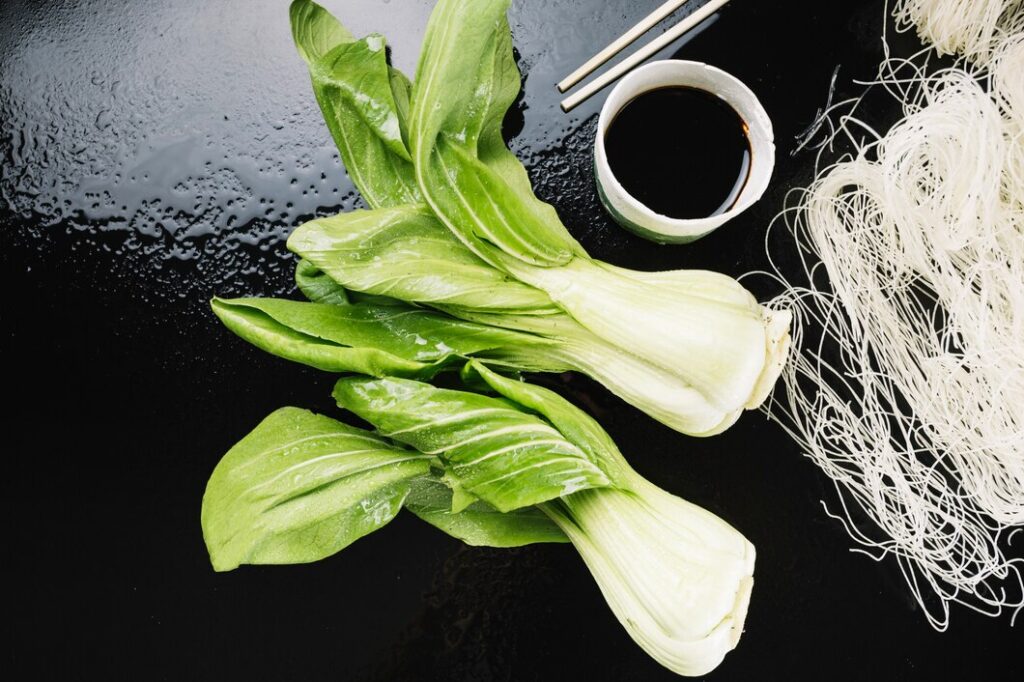
Growing up in a “barangay” (neighborhood) in the Philippines shaped my love for gulay (vegetables). Eating gulay reminds me of the warmth of my childhood memories. Yesterday, I decided to buy gulay for my dinner. Particularly, a pack of Bok choy and a pack of string beans at the Asian store, which cost €2.50 each and is approximately around 284.09 pesos. (So expensive!)
My young provincial life roots from a deep appreciation for vegetables, which I see most of the time in local Irish markets or in Asian stores. Now, let me take you on a walk down memory lane and tell you how having greens on our dinner table reminds me of my young provincial life.
Our mornings were usually accompanied by the pecking of loud chickens on our doorstep. My Inang (grandmother) would start the morning routine, cooking rice in our outside kitchen, which we call as “the dirty kitchen,” while my Tatang (grandfather) would casually pick up one chicken and inspect it from its head to their claws as if to determine whether it was already healthy to eat. My Tatang takes care of his chickens, which we can eat whenever we want.
Because of this morning routine, it reflected our family’s bounty in agriculture. Therefore, this has planted my deep appreciation for the journey of gulays from harvesting to daily food servings.
The smell of sauteed onions also brings back memories of my childhood mornings, as well as the taste of “sinangag” (fried rice) during breakfast makes me swing my legs like a five-year-old.
Our mornings also begin with a loud crow from our rooster perched at our mango tree. This was a familiar sound — a sign to my Tatang’s daily routine.
I remember him wearing his favorite camouflage bucket hat and carrying his hammer worn like a belt. Then he would grab a handful of rice grains and toss them over the dusty ground while rolling his tongue, sounding like “crrr-tk-tk-tk,” then all of the chickens would gather into one flock as if it was their alarm clock ringing.
Even at a young age, I was raised into this journey. I learned to help my Inang cook a live chicken. Honestly, the squawks of it initially shocked my ears. Then, both of us would pluck the chicken’s feathers in steaming water. With that memory, the process of it was definitely traumatizing. However, as I watched the process– the nervous plucking of feathers was replaced by the savory aroma of simmering broth. Soon after, I realized it was simply the way of life my grandparents grew up with. Their normal provincial life.
What dish did the chicken become, you may ask? It’s Tinolang Manok (Chicken Tinola). My favorite broth is made of ginger, garlic, onions, sayote or papaya, and malunggay (horseradish). I grew up picturing our backyard as a mini-farm, abundant with a bunch of gulay (vegetables) that made their way into the pot– the separated bundle of horseradish leaves, the softness of sayote (chayote), the pungent odor of ginger and onions. Everyingredient bought from the “chendaan” (market) or harvested in our backyard was easily at our fingertips, a privilege I realized we always had.
Our house was basically a mini-farm, and I could get one for free without spending euros at a big grocery chain. We harvest our own vegetables from my Tatang’s hard work of growing them as our safety “fences.”
As a child, witnessing this process, from getting a live chicken to a steaming pot of Tinola and harvesting the vegetables in our backyard, instilled in me a strong belief that cooking was more than just a chore. It is a way of life and love in its purest form.
Cooking — within the family was about more than just filling our bellies. It was also about preserving memories and connecting with the process of food preparation. We connected to the animals we raised with respect, cooking every part to cook something nourishing. We felt connected to the plants we took care of for years, appreciating the effort of each one to reach our dinner tables. I realized how this was what the phrase meant “love is the best ingredient.”
Buying a gulay yesterday felt like I was reliving my childhood memories, which, in fact, shows that I am missing a piece of home. The very act of cooking vegetables reminds me of the greens as our backyard fence, the rooster’s morning serenade, the smell of cooked sinangag…These memories are intertwined with cooking alongside my Inang and Tatang.
It wasn’t just about preparing meals. It was the making of memories, the planting of my love for gulay and everything in between the process of eating the meals we prepare for ourselves.
In hindsight, we also respect those who nurtured our food– the farmers I grew up seeing in our neighborhood and the farmers all over the world. Supporting them by buying local and seasonal produce is an ingrained habit of mine. It fostered a deep respect for the land and the animals that sustained us up to this moment, ensuring that every bite I have held the essence of life itself.
While I may not be able to cook a live chicken in Ireland anymore, the lessons I learned in our Filipino will definitely be forever in my memory bank, whether it’s about preparing for breakfast, lunch, or dinner.
Now, this essay is more than just about gulays or me noticing the loudness of the chickens in the morning or, the scent of sauteed onions, or the cooking process of practically everything.
But rather, this essay shows that the act of cooking is about creating lasting memories, appreciating all the process it takes to nourish ourselves and the connections we nurture with everything that feeds us.
And I believe that it’s a story worth telling.
This was written by our contributing writer, Hannah Daygo.
Leave a Reply